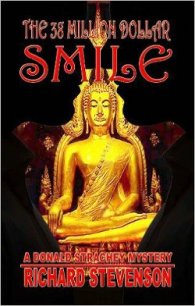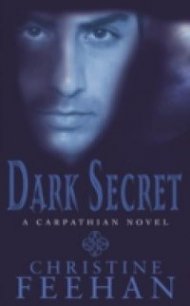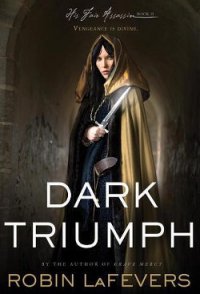Congo - Crichton Michael (книги регистрация онлайн бесплатно .TXT) 📗
“Yes, but the silverback coloring is whiter than this. This fur is distinctly gray.” He hesitated. “Maybe it’s a kakundakari.”
Munro looked disgusted.
The kakunidakari was a disputed primate in the Congo. Like the yeti of the Himalayas and bigfoot of North America, he had been sighted but never captured. There were endless native stories of a six-foot-tall hairy ape that walked on his hind legs and otherwise behaved in a manlike fashion.
Many respected scientists believed the kakundakari existed; perhaps they remembered the authorities who had once denied the existence of the gorilla.
In 1774, Lord Monboddo wrote of the gorilla that “this wonderful and frightful production of nature walks upright like man; is from 7 to 9 feet high… and amazingly strong; covered with longish hair, jet black over the body, but longer on the head; the face more like the human than the Chimpenza, but the complexion black; and has no tail.”
Forty years later, Bowditch described an African ape “generally five feet high, and four across the shoulders; its paw was said to be even more disproportionate than its breadth, and one blow of it to be fetal.” But it was not until 1847 that Thomas Savage, an African missionary, and Jeffries Wyman, a Boston anatomist, published a paper describing “a second species in Africa… not recognized by naturalists,” which they proposed to call Troglodytes gorilla. Their announcement caused enormous excitement in the scientific world, and a rush in London, Paris, and Boston to procure skeletons; by 1855, there was no longer any doubt- a second, very large ape existed in Africa.
Even in the twentieth century, new animal species were discovered in the rain forest: the blue pig in 1944, and the red-breasted grouse in 1961. It was perfectly possible that a rare, reclusive primate might exist in the jungle depths. But there was still no hard evidence for the kakundakari.
“This print is from a gorilla,” Munro insisted. “Or rather a group of gorillas. They’re all around the perimeter fence. They’ve been scouting our camp.”
“Scouting our camp,” Elliot repeated, shaking his head.
“That’s right,” Munro said. “Just look at the bloody prints.”
Elliot felt his patience growing short. He said something about white-hunter campfire tales, to which Munro said something unflattering about people who knew everything from books.
At that point, the colobus monkeys in the trees overhead began to shriek and shake the branches.
They found Malawi’s body just outside the compound. The porter had been going to the stream to get water when he had been killed; the collapsible buckets lay on the ground nearby. The bones of his skull had been crushed; the purple, swelling face was distorted, the mouth open.
The group was repelled by the manner of death; Ross turned away, nauseated; the porters huddled with Kahega, who tried to reassure them; Munro bent to examine the injury. “You notice these flattened areas of compression, as if the head was squeezed between something
Munro then called for the stone paddles that Elliot had found in the city the day before. He glanced back at Kahega.
Kahega stood at his most erect and said, “We go home now, boss.”
“That’s not possible,” Munro said.
“We go home. We must go home, one of our brothers is dead, we must make ceremony for his wife and his children, boss.”
“Kahega..
“Boss, we must go now.”
“Kahega, we will talk.” Munro straightened, put his arm over Kahega and led him some distance away, across the clearing. They talked in low voices for several minutes.
“It’s awful,” Ross said. She seemed genuinely affected with human feeling and instinctively Elliot turned to comfort her, but she continued, “The whole expedition is falling apart. Ifs awful. We have to hold it together somehow, or we’ll never find the diamonds.”
“Is that all you care about?”
“Well, they do have insurance…
“For Christ’s sake,” Elliot said.
“You’re just upset because you’ve lost your damned monkey,” Ross said. “Now get hold of yourself. They’re watching us.”
The Kikuyu were indeed watching Ross and Elliot, trying to sense the drift of sentiment. But they all knew that the real negotiations were between Munro and Kahega, standing off to one side. Several minutes later Kahega returned, wiping his eyes. He spoke quickly to his remaining brothers, and they nodded. He turned back to Munro.
“We stay, boss.”
“Good,” Munro said, immediately resuming his former imperious tone. “Bring the paddles.”
When they were brought, Munro placed the paddles to either side of Malawi’s head. They fitted the semicircular indentations on the head perfectly.
Munro then said something quickly to Kahega in Swahili, and Kahega said something to his brothers, and they nodded. Only then did Munro take the next horrible step. He raised his arms wide, and then swung the paddles back hard against the already crushed skull. The dull sound was sickening; droplets of blood spattered over his shirt, but he did not further damage the skull.
“A man hasn’t the strength to do this,” Munro said flatly. He looked up at Peter Elliot. “Care to try?”
Elliot shook his head.
Munro stood. “Judging by the way he fell, Malawi was standing when it happened.” Munro faced Elliot, looking him in the eye. “Large animal, the size of a man. Large, strong animal. A gorilla.”
Elliot had no reply.
There is no doubt that Peter Elliot felt a personal threat in these developments, although not a threat to his safety. “I simply couldn’t accept it,” he said later. “I knew my field, and I simply couldn’t accept the idea of some unknown, radically violent behavior displayed by gorillas in the wild. And in any case, it didn’t make sense. Gorillas making stone paddles that they used to crush human skulls? It was impossible.”
After examining the body, Elliot went to the stream to wash the blood from his hands. Once alone, away from the others, he found himself staring into the clear running water and considering the possibility that he might be wrong. Certainly primate researchers had a long history of misjudging their subjects.
Elliot himself had helped eradicate one of the most famous misconceptions-the brutish stupidity of the gorilla. In their first descriptions, Savage and Wyman had written, “This animal exhibits a degree of intelligence inferior to that of the Chimpanzee; this might be expected from its wider departure from the organization of the human subject.” Later observers saw the gorilla as “savage, morose, and brutal.” But now there was abundant evidence from field and laboratory studies that the gorilla was in many ways brighter than the chimpanzee.
Then, too, there were the famous stories of chimpanzees kidnapping and eating human infants. For decades, primate researchers had dismissed such native tales as “wild and superstitious fantasy.” But there was no longer any doubt that chimpanzees occasionally kidnapped-and ate-human infants; when Jane Goodall studied Gombe chimpanzees, she locked away her own infant to prevent his being taken and killed by the chimps.
Chimpanzees hunted a variety of animals, according to a complicated ritual. And field studies by Dian Fossey suggested that gorillas also hunted from time to time, killing small game and monkeys, whenever- He heard a rustling in the bushes across the stream, and an enormous silverback male gorilla reared up in chest-high foliage. Peter was startled, although as soon as he got over his fright he realized that he was safe. Gorillas never crossed open water, even a small stream. Or was that a misconception, too?
The male stared at him across the water. There seemed to be no threat in his gaze, just a kind of watchful curiosity. Elliot smelled the musty odor of the gorilla, and he heard the breath hiss through his flattened nostrils. He was wondering what he should do when suddenly the gorilla crashed noisily away through the underbrush, and was gone.


![[Magazine 1968-012] - The Million Monsters Affair - Davis Robert Hart (серия книг .txt) 📗](/uploads/posts/books/56864/56864.jpg)

